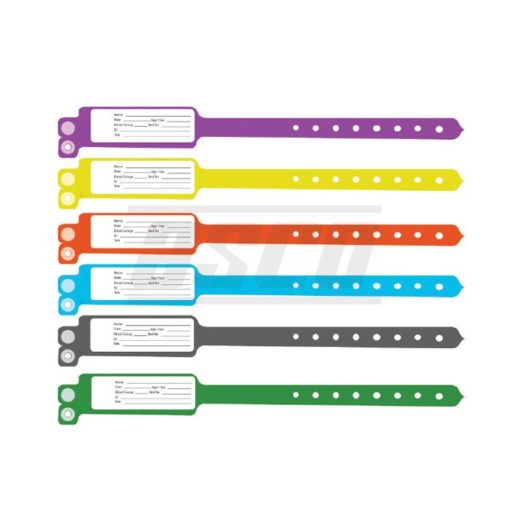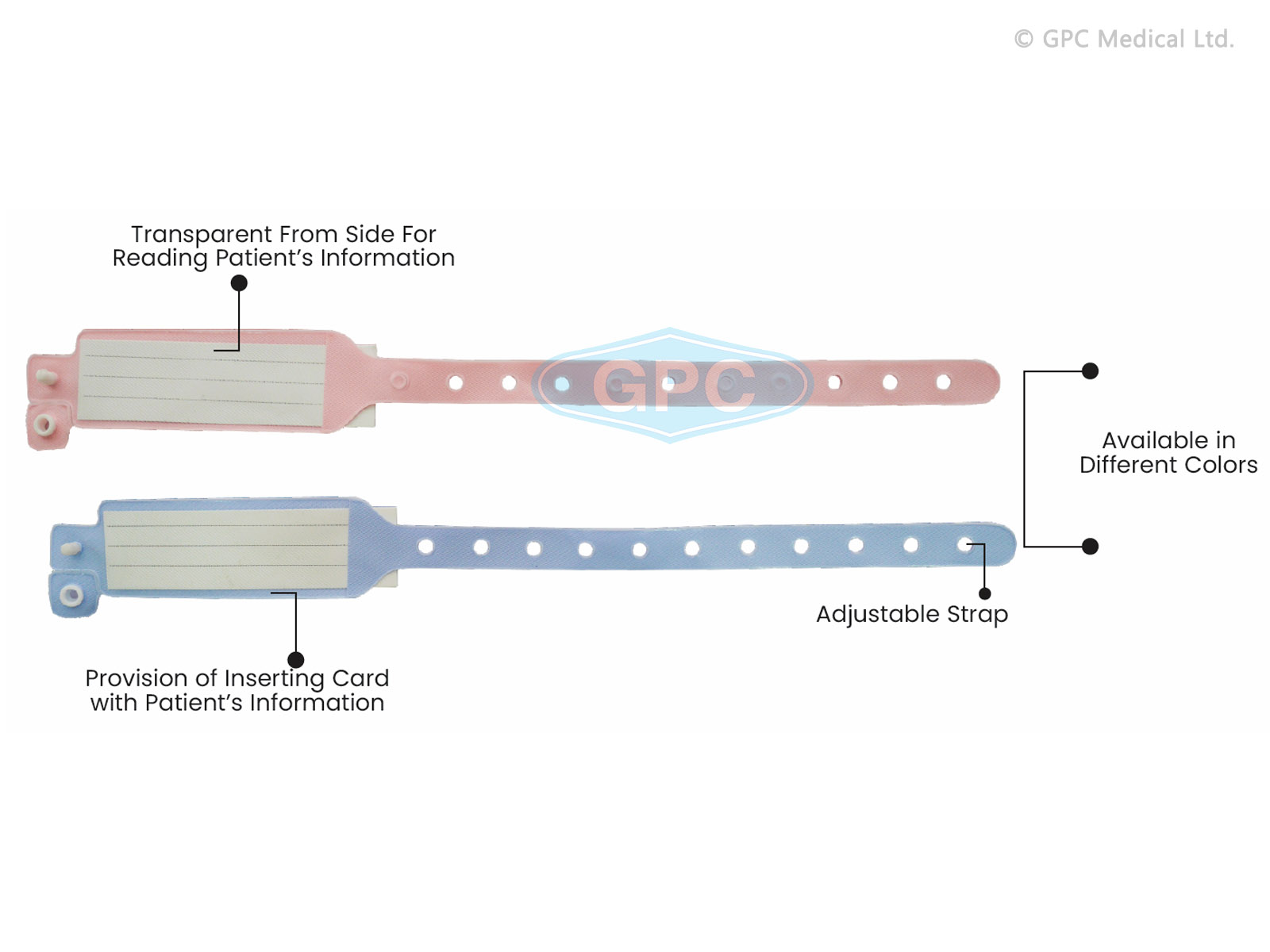Checking Out the Numerous Sorts Of Patient Identification Band Made Use Of in Clinical Facilities
In the intricate globe of health care, the vital function of Patient Identification bands commonly goes unnoticed. These bands, varying from basic paper wristbands to advanced RFID bands, form the foundation of Patient safety methods, making sure accuracy in Patient Identification. Yet, the vast variety of these bands, each with its unique advantages and constraints, is commonly ignored. As we navigate via this subject, one might get understanding into the subtle intricacies and crucial relevance of such bands in medical centers.
Recognizing the Value of Patient Identification Bands
While they might seem like mere devices, Patient Identification bands play an essential duty in medical centers. These bands function as a vital device for verifying Patient identification, protecting against medical errors associated with misidentification. The bands normally show important information such as the Patient's name, age, blood group, and any kind of recognized allergic reactions. They enable healthcare professionals to swiftly access this vital details, thereby assisting in precise and timely medical treatment. Patient Identification bands likewise aid in improving management tasks, making certain precise record-keeping and billing. In spite of their simpleness, these bands embody the principle of Patient safety and security, a cornerstone of quality health care. Without them, the risk of clinical errors, and as a result, Patient injury, may significantly increase.
Standard Paper Wristbands: Their Use and Limitations
Typical paper wristbands have been a staple in Patient Identification throughout various clinical centers. While their use prevails, they nurture certain limitations that might impact their performance in Patient monitoring. This section will certainly concentrate on the extent of their application and the intrinsic downsides linked with their usage.
Paper Wristbands: Use Extent
In the realm of Patient Identification, paper wristbands have actually long held a critical function. These bands are generally utilized in outpatient settings, where the Patient's keep is temporary. The wristbands consist of essential information such as the Patient's name, day of birth, and an unique Identification number. This simple, yet reliable system, enables physician to rapidly and precisely recognize individuals, ensuring the right treatment is administered. Paper wristbands are additionally utilized in emergency situations, where quick Identification is paramount. Their usage includes occasions like blood donation drives and mass inoculation programs, further highlighting their versatility. In spite of innovations in innovation, the humble paper wristband stays a cost-effective and reputable service for Patient Identification in various medical care circumstances.
Limitations of Paper Wristbands
Despite their widespread usage, paper wristbands are not without their downsides. In enhancement, paper wristbands typically do not have the technical capacities of more modern-day choices, such as barcoding or RFID chips, limiting their performance to merely presenting written info. Paper wristbands can create discomfort or skin irritation to some clients, particularly when used for extended durations.
Barcoded Wristbands: Improvements in Patient Identification
While Patient Identification has actually long been a critical element of healthcare, the development of barcoded wristbands indicates a significant leap ahead. These bands utilize the simpleness of barcoding technology, enabling Patient details to be rapidly checked and accessed. They improve the rate and precision of Patient Identification, decreasing the risk of medical errors associated with misidentification. Barcoded wristbands are affordable, very easy to produce, and get rid of handwriting errors common with manual systems. They are not without limitations. While they use enhancements over typical bands, the barcode can come to be worn or smudged, making it unreadable. In spite of this, barcoded wristbands remain a necessary device in modern-day healthcare setups, representing the junction of modern technology and Patient treatment.
Radio Frequency Identification (RFID) Bands: an Action In The Direction Of Futuristic Healthcare
The evolution of Patient Identification bands has produced the emergence of Superhigh frequency Identification (RFID) Bands (patient identification band). These cutting-edge devices present essential benefits for medical care centers, providing a much more efficient and technically advanced means of Patient Identification. The application of RFID in medical care is a significant action in the direction of an extra futuristic technique to Patient monitoring and security
Understanding RFID Bands

RFID Bands: Key Benefits
Accepting a future where technology and health care combine, superhigh frequency Identification bands offer several key benefits. Mostly, these bands improve Patient security by providing precise, instantaneous Identification, thus decreasing clinical mistakes. RFID bands can keep a vast amount of Patient data, including medical background and allergies, allowing personalized care. They additionally enhance administrative tasks, as the automated information entry changes hand-operated processes, improving performance and decreasing documentation. RFID bands use real-time monitoring of patients, vital in high-risk atmospheres such as surgical treatment or extensive care. These bands are immune and resilient to ecological elements, guaranteeing consistent capability. Overall, RFID bands stand for a substantial development in Patient Identification technology, profiting both clients and doctor.
Applying RFID in Health Care
As we step right into a highly innovative age, the implementation of RFID bands in healthcare ends up being increasingly crucial. These bands give a seamless means to track and recognize patients, guaranteeing their security and enhancing effectiveness in treatment procedures. RFID bands use linked here countless advantages over conventional Identification approaches. They can keep a vast quantity of information, consisting of the Patient's case history and therapy plans, which can be quickly accessed by health care carriers. This data aids doctors make notified choices concerning the Patient's therapy strategy. Furthermore, RFID bands minimize clinical mistakes by giving precise Patient Identification, which is essential in stopping misdiagnosis or wrong medication administration. Hence, the implementation of RFID bands is a significant step towards improving Patient security and health care distribution.

Color-Coded Wristbands: Aiding in Quick and Accurate Medical Diagnosis
In the dynamic setting of a medical center, color-coded wristbands why not try this out have actually emerged as important devices for swift and accurate Identification of a patient's clinical problem. These wristbands, worn by patients, lug details shades that match to various medical conditions or standings. This system is developed to offer prompt visual signs to healthcare suppliers, boosting Patient safety and security and care quality.
Strategies for Effective Execution and Monitoring of Patient ID Bands
Achieving optimum use of Patient Identification bands necessitates a well-structured approach for their application and monitoring. The very first step involves training all wellness workers on the relevance of appropriately using and reviewing these bands. Second of all, healthcare facilities must systematize the use of ID bands across all departments, making certain harmony and reducing disparities. Normal audits must be performed to verify adherence to plans and to remedy any kind this page of inconsistencies. Patient education and learning is additionally essential; people need to comprehend the purpose of the bands and the demand for their consistent wear. patient identification band. Lastly, it's crucial to have a back-up strategy in place, such as barcode scanning or biometrics, to make certain that Patient Identification is never ever endangered.
Conclusion
Patient Identification bands are important in medical centers to guarantee security and precision. Conventional paper, barcoded, RFID, and color-coded wristbands each hold special advantages, varying from cost-effectiveness to advanced data storage and immediate clinical alerts. Reliable implementation and management of these bands can considerably reduce medical errors, increase performance, and improve overall Patient care. Thus, understanding and utilizing these Identification devices is critical for keeping high criteria in health care.
These bands, differing from straightforward paper wristbands to advanced RFID bands, create the backbone of Patient security procedures, guaranteeing precision in Patient Identification.The advancement of Patient Identification bands has brought concerning the emergence of Radio Regularity Identification (RFID) Bands. Overall, RFID bands stand for a significant improvement in Patient Identification technology, benefiting both people and healthcare companies.
RFID bands lower clinical errors by offering exact Patient Identification, which is critical in protecting against misdiagnosis or wrong medicine administration. Patient education is additionally essential; people need to recognize the purpose of the bands and the demand for their constant wear.